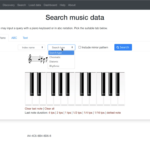Bells
Preserving historical bells cultural heritage
Bell structures are widespread both in urban and rural areas. They contribute to the distinctive shape of a landscape, defining its soundscape and playing as markers of daily, festive and ritual times. Bell heritage is complex and fascinating and influences our perception of the places we live daily. Both its tangible and intangible assets, and their dependencies are hardly encoded explicitly: most of this heritage is transmitted orally. This pilot intends to encode this valuable information in a knowledge graph, which will be publicly available and particularly relevant for scholars and cultural institutes.
In the collective perception, bell tower is certainly one of the architectural elements that best characterize the Italian landscape. To better understand their value could be considered how Bell Towers can play a cultural role in the Italian society, thanks to their recurring presence in the space landscapes.
Moreover, Bell Tower could be mostly considered a very large musical instrument capable of hosting a belfry and bells that allow to reproduce different kinds of sounds. The musical instrument could define very specific identity values for each territorial area of reference thanks to the traditional culture. Those kinds of values are related to the materials used, the construction characteristics, the tradition of the operators, the musical repertoire and the function of the bell instrument, as well as values are also related to intangible aspects such as human know-how and the ways of transmitting this knowledge and practice. The historical Bell heritage can therefore be defined as a complex set of two kinds of elements that take place in a specific territorial area: material (bell tower, belfry, armor, bell) and immaterial (oral tradition, musical repertoire, language, sound practices, traditional techniques).
The Bell pilot aims to provide tools and methods, through which Historical Bells heritage can be better known and put in relation with other parts of cultural heritage. The final interface will enable users to navigate through the connections between bells sound, tangible heritage (bells, bell Towers) and intangible heritage (sound practices, oral transmission of knowledge among communities and bearers of tradition).





